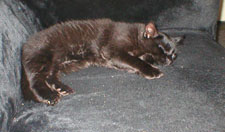Introduction To HTML
Headings & Paragraphs
Headings
Headings are made using the <h1> to <h6> tags.
<h1>This is the largest heading</h1>
<h6>This is the smallest heading</h6>
Headings aren't just used to make the font larger or smaller. They are used by some search engines to work out the structure of the page and used by readers of your page to skim the content. It makes sense to use h1 for the main page title followed by h2 for subheadings, followed by h3 etc.
Browsers automatically add an empty line before and after headings.
Paragraphs
The <p> tag is used to indicate a paragraph of text.
<p>This is a paragraph of writing. The browser leaves an empty line before and after the paragraph.</p>
Most browsers cope if you forget to close the tag - but it generally makes sense to do things properly.
Line Breaks
A manual line break can be displayed whenever you use the <br> tag. You can use tags within other tags as in the example below,
<p>This paragraph has a line break<br>bang in the middle of it.</p>
Horizontal Rule
The <hr> tag creates a horizontal line across the page. You can use it to separate paragraphs.
<p>This paragraph is separated from the one below by a horizontal line.</p>
<hr>
<p>This paragraph is separated from the one above by a horizontal line.</p>
Exercise 2
Add some content to the page you started. Use the tags that you have met on this page to structure the content.

